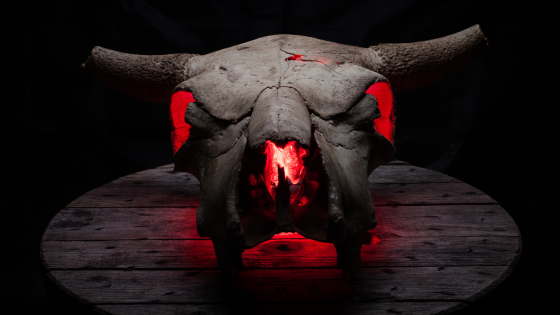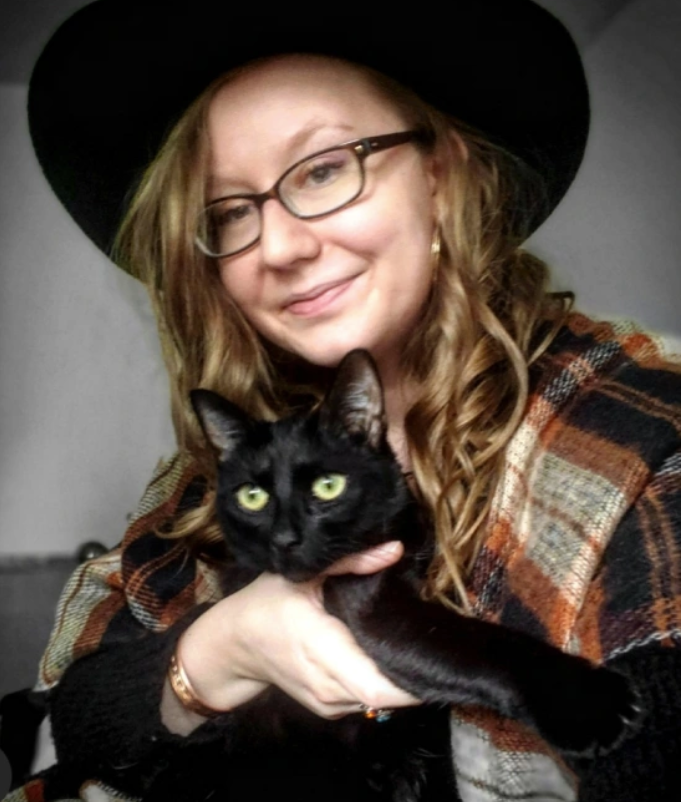What Are Demons?
Most people understand demons from a Christian perspective: ultimately, evil, horrible creatures who hurt people because they hate God (who loves humans more than them) after being cast out of Heaven. Once angels, now they are demons and follow Satan, head of the rebellion against God. Other religions worship demons, such as demonolaters; witches also have been known to work with demons in their practice, though they usually mean daemon, or a spirit of great power such as a land spirit or lesser deity (“Daemon”). The truth is, we don’t know what demons are—religions provide an interpretation only. It comes down to what you believe (Jaye 2023).
I find it more helpful to define them by what they can do, conclusions I drew from my demonic folklore thesis-turned-book research. Demons are incorporeal entities (meaning they don’t possess bodies), are hyperintelligent, and malicious in their behavior towards humans; they react negatively to Christian iconography and produce negative miracles.
How Do You Know it’s a Demon?
I created an acronym to help people understand how demons are identified: EPIM. EPIM stands for Evil Presence, Intensity, Malice – these factors distinguish a demonic infestation from other types of spiritual activity.
The feeling of an evil presence is reported in all narratives of this type; the intensity builds from very small phenomena upwards: it would be about a twenty on a ten-point scale if it were a demon plaguing you. Malice refers to deeply malevolent behavior within the negative miraculous events they can produce, often targeting certain people. Miraculous things can happen in other narratives, such as poltergeists, but they’re more neutral (like the work of a prankster).
Are Demons Everywhere?
Demons are NOT common; not at all—never assume something is a demon right away. I can almost guarantee that whatever is plaguing you is not a demon. Question where you got the idea that it was a demon. Was it a movie? Paranormal TV? Neither can be used for information. Much of demonology work involves undoing the misunderstanding of the public; nine times out of ten, it’s not a demon you’re dealing with. There are many spirit subtypes and there are other types of spirits that can possess people such as jinn and dybbukim.
How Do They Get Into People’s Lives?
Demons can enter people’s lives through the Law of Invitation, the Law of Attraction, Already Inhabited (Jaye 2021) and Sent. When it comes to Ouija boards—if you don’t know how to use it, anything is dangerous. A demon is not on the other end of every Ouija board because genuine demonic experiences are not very common. Many people use Ouija boards without a problem; the board itself isn’t inherently evil nor is the act of using it, but there is risk of an unfriendly spirit coming through.
Are Demons Dangerous?
The spirit I’ve isolated through my definition of demons is incredibly dangerous to humans. A daemon does not appear to be the same thing since a demon will never help a human in any way unless bound to by magic.
Most people are very interested in demonology, but going deeper into the study can be harmful to one’s life, health, etc. Demons have been known to pushback when more information on them is put out into the world. I personally experienced this when writing my thesis and subsequent book. Demons do not want to be known or understood. Exercise caution if you study further.
Am I in Danger?
For the most part, no. The average person has nothing to worry about. Saying their name won’t invoke them; it takes serious ritual work to summon them, so most people aren’t going to encounter them. There is a small chance of a demon already inhabiting a home you want to buy/rent, but listen to your gut. If something is telling you not to go in there, don’t.
To protect yourself, be as happy and healthy as you can in mind, body, and spirit; connect to a higher power, whatever you believe in. Stay away from places that feel evil since demonic malice can be sensed by even non-psychics.
Chasing demons for thrills will get you hurt; this is not a condemnation of paranormal investigation by any means, but not the kind where you chase dark entities hoping one will do something on camera for views. These are powerful, old entities; they can (and will) hurt you.
Satanic Panic is very real; don’t fall prey to it and scare yourself; demons need wide open doorways to come through, not cracks.
References
“Daemon.” n.d. Online Etymology Dictionary. https://www.etymonline.com/word/daemon.
Jaye, Victoria. 2023. The Black Hours: Modern Demonic Experiences & Folklore.
Jaye, Victoria, “In the Presence of Evil: Demonic Perception Narratives” (2021). All Graduate Plan B and other Reports, Spring 1920 to Spring 2023. 1563.
https://digitalcommons.usu.edu/gradreports/1563.
About the Author
Victoria Jaye is a demonic folklorist, who blogs about demons, horror movies, and folklore. Her research areas are demonic experiences, narratives, and phenomena. Her latest release, The Black Hours: Modern Demonic Experiences & Folklore, is now available! Victoria also hosts a podcast called, Demon Folklorist, on Paranormal Buzz Radio and can heard wherever you listen to podcasts.


